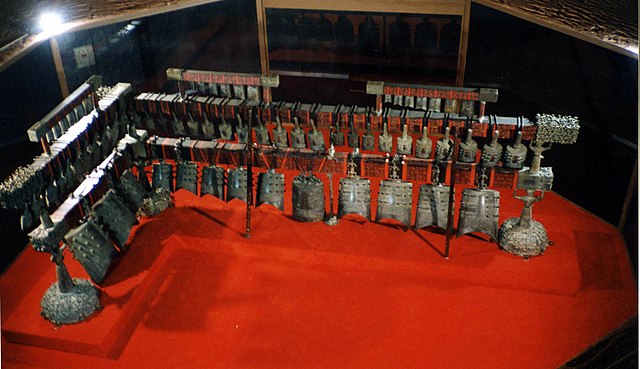Bellfounding is the casting and tuning of large bronze bells in a foundry for use such as in churches, clock towers and public buildings, either to signify the time or an event, or as a musical carillon or chime. Large bells are made by casting bell metal in moulds designed for their intended musical pitches. Further fine tuning is then performed using a lathe to shave metal from the bell to produce a distinctive bell tone by sounding the correct musical harmonics.
11th century BCE bell, Shang dynasty
Bianzhong of Marquis Yi of Zeng, dated 433 BCE
Cast Bells Whitechapel Bell Foundry, ca. 1880, State Library of New South Wales
Church Bells in the workshop at Whitechapel Bell Foundry, c. 1880
A bell is a directly struck idiophone percussion instrument. Most bells have the shape of a hollow cup that when struck vibrates in a single strong strike tone, with its sides forming an efficient resonator. The strike may be made by an internal "clapper" or "uvula", an external hammer, or—in small bells—by a small loose sphere enclosed within the body of the bell.
13th c. BC bell, Shang dynasty
Chinese bronze bell, 18th-16th century BC
Bianzhong of Marquis Yi of Zeng, dated 433 BC.
English full-circle bells shown in the "down" position, in which they are normally left between ringing sessions.







